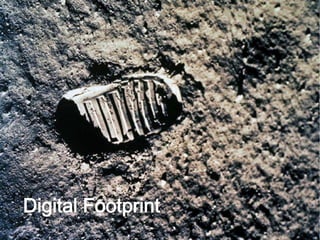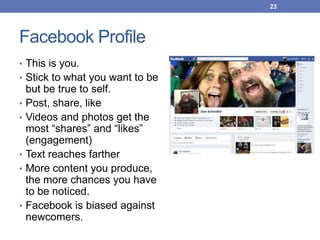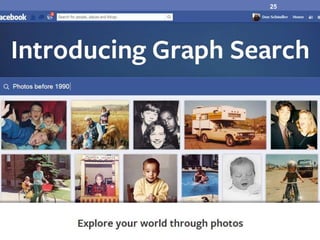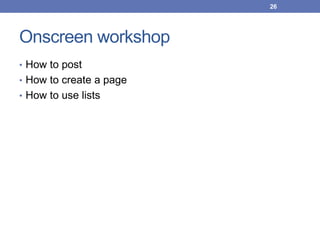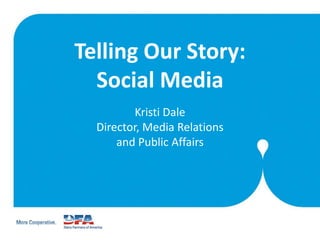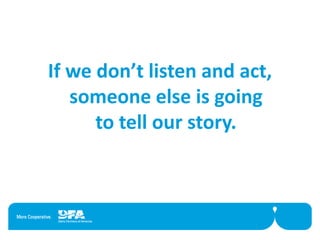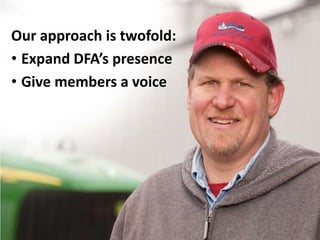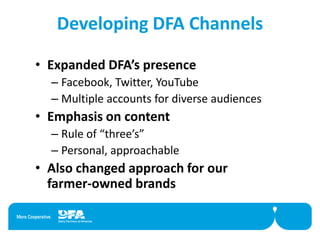DFA Social Media Class at AgConnect 2013
- 1. SOCIAL MEDIA 101 Getting Started Jan 2013
- 2. 2 Don Schindler • Grew up on family farm in southeast Missouri • Submariner • Mizzou / ND grad • been working the internets since 1999
- 3. SOCIAL MEDIA Click to edit Master SUCKS! title style Click to edit Master text styles
- 4. Kids adopted it Ipsum lorem dolor sit amet first.
- 5. 5 It’s not easy. http://www.flickr.com/photos/twon/2291999837/sizes/o/in/photostream/
- 6. Real-Time Forever • Face-to-Face, instant message, and cell phone are real time Real-Time Forever communications but they are also fleeting. • Social Media is real-time communications that can be permanent and spread virally. • Should that scare you? Scares me. • But that doesn’t mean you shouldn’t use it.
- 7. YOUR AUDIENCE HAS AN AUDIENCE AND THEIR AUDIENCE TRUSTS THEM OVER YOU. HOW MANY PEOPLE KNOW THAT HE REALLY DISLIKES BEING HERE?
- 8. 8 HOW TO GET STARTED First things first
- 9. Who R U? • To (target audience), (your name) is the (blank provider/service) of (blank) delivered through (blank). • To the dairy industry, Don Schindler is a thought leader and producer of creative marketing and communications solutions delivered through digital technologies.
- 10. Brand Statement • What are you known for? • What do you want to be known for? • How will this benefit my farm?
- 12. 12 What does your digital presence look like?
- 13. KNOWLEDGE BLOG - OUT OF MY HANDS • KNOWLEDGE • SPEAKER -OUT OF MY MOUTH
- 14. Click to edit Master title style Click to edit Master text styles
- 15. Click to edit Master Who do you know and how well? title style Click to edit Master text styles
- 16. Twitter Handshake? Click to edit Master title style Click to edit Master text styles
- 17. Click to edit Master <A HREF=“DON KNOWS” TARGET=“_BLANK”>DON KNOWS HOW TO TALK THE TALK”</A> title style Click to edit Master text styles
- 18. 18 Your Website/Blog is Your Planet
- 19. 19 Lead everything back to your website Email Assoc. Search Websites Google Linkedin Adwords Twitter Youtube Facebook Blog / Photo Website Sites
- 20. 20 Why blogs? • Search Engines love blogs • Easy to set up • Add photos, videos, text • Comments/Feedback • Easy to share • Easy to be mobile • Reveal your personality
- 21. 21 Onscreen workshop • How to set up a blog • How to post • How to do a page
- 22. 22
- 23. 23 Facebook Profile • This is you. • Stick to what you want to be but be true to self. • Post, share, like • Videos and photos get the most “shares” and “likes” (engagement) • Text reaches farther • More content you produce, the more chances you have to be noticed. • Facebook is biased against newcomers.
- 24. 24 Facebook Page • Page is an entity like your farm or company. • Contains relevant information • Post videos, photos and links • Gets “likes” instead of friends • Tough to be noticed right now • Search will change this
- 25. 25
- 26. 26 Onscreen workshop • How to post • How to create a page • How to use lists
- 27. 27
- 28. 28 Twitter Power • Pros • Cons • Power of instant • Lots of noise (need conversations filters) • Spread the word quickly • Lots of spam (careful of (depending on your bad stuff) following) • Lots of robots (machines • Follow experts in many that are collecting fields people) • You can follow and • Relationships are weak possibly speak with • At the mercy of Twitter people that wouldn’t changes normally be in your circle of influence
- 30. 30 Third Party Apps • Hootsuite • Tweetdeck • Tweetbot • Twitter Mobile App
- 31. 31 Twitter Workshop • How to post • How to change background • How to use lists • How to search
- 32. 32
- 33. 33 YouTube • 2nd largest search engine • More than 4 billion views per day • 72 hours of video uploaded every minute • Most younger audiences prefer to TV • Comments available • You can edit, annotate and drive traffic to other videos • Remember to drive back to website
- 34. 34 YouTube Workshop • How to make a channel • How to upload a video • Keywords matter • How to spread the word
- 35. 35 Secrets to Social Media • Listen first • Comment positively (negative comments reflect on you not the other person) • Share other’s information • Help others • Celebrate with others • Have a personality – be entertaining • It’s all about building trust – honest, integrity, helpful
- 36. 36
- 37. 37 Don Schindler • don.schindler@rosedmi.com • donschindler.com • @donschindler • Facebook.com/donschindler • 574-387-1688
- 38. Telling Our Story: Social Media Kristi Dale Director, Media Relations and Public Affairs
- 39. If we don’t listen and act, someone else is going to tell our story.
- 40. Our approach is twofold: • Expand DFA’s presence • Give members a voice
- 41. Developing DFA Channels • Expanded DFA’s presence – Facebook, Twitter, YouTube – Multiple accounts for diverse audiences • Emphasis on content – Rule of “three’s” – Personal, approachable • Also changed approach for our farmer-owned brands
- 42. Engaging Members • Empower farmers – Tell their own stories – Put a personal face on the industry – Lend credibility • Make connections outside of ag • Educate and inform
- 43. Engaging Members • Resource manual – Overview of channels, tips – When to respond – Security issues • Delicious account – Online information hub that saves time – Answers “where do I begin?”
- 44. Questions?











